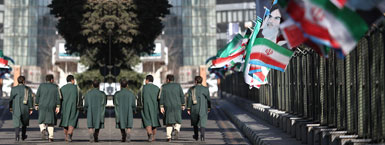Remote Sensing (GIS)
There is no doubt that the Earth is our only home and source of life on which we all depend. Human activities and natural events have left and will leave a lot of adverse effects on the face and the texture of the earth. Existing limited resources and pressures on these resources have required the study of the effects and extent of changes at different levels from local to global. Remote sensing as a science, technology, and art of acquiring information from events and phenomena without physical contact, along with the Geographic Information System (GPS) as a platform for storage, maintenance, management, and analysis of spatial and descriptive data analysis can provide many solutions for environmental and natural resources problems. Remote Sensing and Geographic Information Systems have a wide range of applications in various fields, including: precision agriculture and farming, climate change, forest monitoring and management, dust storms and air pollution, natural resources management, ecology, oceanography, earth moving, earthquake, soil erosion and desertification, land cover and land use maps, urban extension studies, waste management and location, food security, fire design, flood and natural hazards, hydrology and watershed management, road network, oil and gas extraction, and other Fields. Department of Remote Sensing and Geographical Information System of Tarbiat Modares University was founded in 1995 by late Dr. Mohammad Najafi Dysfani (1959-1995), as the first remote sensing and GIS department in Iran. This department began its academic activity in the same year with the admission of 7 master students. Since then, TMUs Department of Remote Sensing has trained many experts and faculty members for government departments, research centers and universities all over the country. Currently, the department is offering programs in the areas of water and soil resources, natural hazards and rural and urban studies. In the past, this department has committed itself to providing sound scientific qualifications, and at the same time it strives to provide appropriate scientific environment by encouraging interdisciplinary activities and collaboration with other domestic and international institutes and centers. Our goal is to provide and transfer knowledge through boosting the quality of education and research. Currently, this department enjoys a high student-teacher ratio that provides students an easy access to faculty members. At the same time, it places high priority on communication with other educational and research centers of the country. EducationThe Remote Sensing and Geographic Information System Department currently offers graduate program in this field. Our curriculum is based on the teaching of key and basic skills to students in order to enable them apply and analyze spatial information and satellite imagery. The Remote Sensing and GIS Department provides a scientific and friendly environment for teaching and learning of different remote sensing and GIS issues (visual, thermal, radar, etc). Our competent faculty members who work as a team try to provide an effective and scientific environment for students. The MSc program in Remote Sensing and GIS last about 2 years. In the first year, focus is placed more on basic subjects and theory, practice, practical work and fieldwork. During this period, students are expected to learn the basics and details of the subject and choose their favorite topic for the theses. The subjects covered during the second year are mostly concerned with the specialization of students interests and their preparation to work on their final thesis project, with an emphasis on interdisciplinary projects and modeling. |




